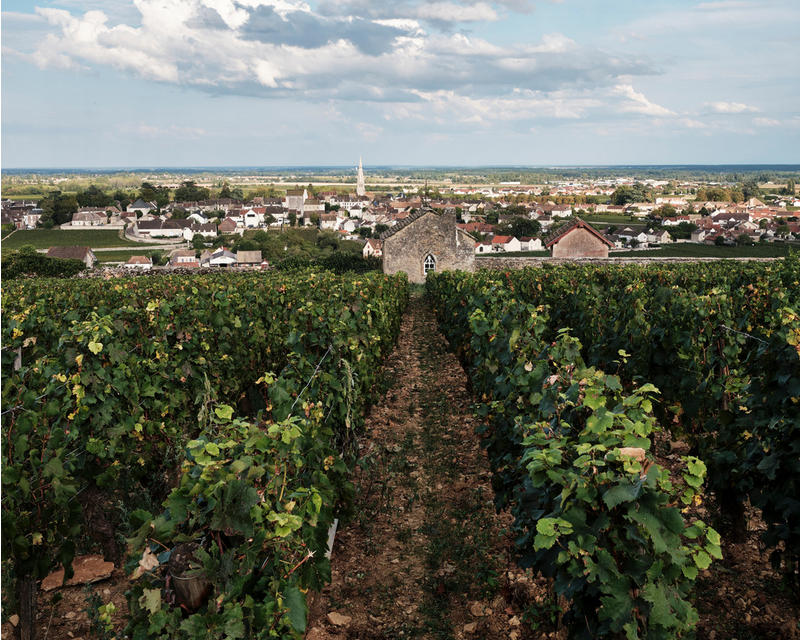Home > Burgundy 2022 En Primeur > Burgundy allocations
Burgundy allocations
FOUR-MINUTE READ
Martyn Rolph, Commercial Manager
When it comes to fine Burgundy, there’s simply not enough of the top bottles and cases to go around. These wines are sold on allocation only. Martyn Rolph, our Head of Buying, explains how – and why – we manage allocations
What is an allocation?
Put simply, an allocation is an invitation to buy an amount of a given wine. As a wine merchant, we receive an allocation from our producers; Benjamin Leroux, for example, offers us an allocation of each of his wines. We can then offer you, our customer, an allocation as part of our En Primeur offer.
Why do allocations matter in Burgundy?
In short: scarcity. Production levels in Burgundy are very small. There is a limited amount of vineyard land, and most vineyards are split among several different growers. Some producers have just a row or two of vines, enabling them to make only tiny quantities of wine. The best and most sought-after wines are generally offered exclusively on allocation, because demand far outweighs supply.
How do vintage conditions impact allocations?
The vintage is hugely important. A difficult year with low volumes will limit the allocation we can get from producers. This in turn impacts the allocation we can offer our customers. Recently, we’ve seen a string of small vintages due to hail and frost. The 2020 and 2021 vintages were particularly affected, reducing the size of our En Primeur offers. The situation becomes more challenging when the demand for these wines is so high. White-wine volumes were tiny in 2021, with producers like Olivier Leflaive making a fraction of their usual volume. Fortunately, we have higher volumes available for the 2022 vintage.
How do you decide a customer’s allocation?
We want to be as fair as possible. When volumes are really limited, we consider the customer’s previous purchases. We want to help people buy from producers who they’ve supported in years gone by. We also consider how involved the customer is with us – for example, coming to tastings and events, storing wine with us and engaging with our other offers.
Ultimately, we want to spread in-demand wines as widely as possible. But it’s important that our customers buy a range of wines rather than just the big names. This support of growers across the region is essential. It’s much more difficult for us to help a customer who only wants a single, highly sought-after case of wine. Producers are increasingly telling us they want their wines to go to customers who enjoy drinking them rather than to those buying solely to sell on in the future.
How can I increase my chances of getting an allocation of my favourite wine?
Make sure that your Account Manager knows what you’re hoping to buy, and be prepared to purchase a range of cases. Also, keep in mind that we try to reward loyal buyers of particular wines. Let’s say you want a particular Premier Cru from Vosne-Romanée: if you buy in the “lesser” years as well as the great vintages, you’re more likely to get what you’re looking for.
(And a note on those “lesser” vintages: the best growers rarely produce poor wines, regardless of vintage conditions. The 2013 vintage is a good example. Though sometimes overlooked, most 2013s are delicious now – and will be for many years to come.)
I can’t get allocations of the wines I want. What do you recommend?
We’re currently seeing such high demand that very few customers can receive all of the wines they would like. It’s a frustrating situation, particularly when some of these wines were more readily available in the past. But the market has changed significantly.
Start by speaking to your Account Manager. They’ll be able to talk you through specific wines and how we are allocating the vintage. There may be a year where our allocation of a particular wine is reduced by more than 50%, making it unattainable. In this situation, we’ll always be transparent and help you find the most suitable alternative. Being flexible in your approach will help you get the best out of buying En Primeur.
Where can I find the next big thing in Burgundy?
As a producer’s wines become more desirable, they invariably become harder to purchase. For example, Ghislaine Barthod’s Chambolle-Musigny was commonly available five or six years ago; Sylvain Cathiard’s wines were relatively straightforward to buy 10 years ago: both are now sold on tight allocation only. More recently, Clos de la Maréchale from Jacques-Frédéric Mugnier has moved into that bracket.
The good news is that quality has never been higher in Burgundy. Look to the excellent wines produced by Domaine de la Vougeraie, Benjamin Leroux, Domaine Castagnier and Domaine François Buffet. There are exceptional wines to be found, and our Buyers are always exploring new producers.
Looking at regions, St Aubin now produces wines that can rival the great white-wine villages. Morey-St Denis is overlooked by some, yet it makes incredibly pure, perfumed wines. Domaine Lignier-Michelot is a highlight from that commune.
What is Berry Bros. & Rudd doing to ensure it has the best allocations in the industry?
We have close, long-term relationships with our producers. This doesn’t just mean visiting them to taste their wines regularly, though that is important. We also support them in the market with tastings and events; and by buying from across their range. Nurturing these relationships is the best way for us to maintain volumes in smaller vintages. Also, we try to identify new talent first. When you champion a producer before they become well known, you build loyalty and lay the foundations for a fruitful relationship. Our Burgundy Buyer, Adam Bruntlett, has unearthed some true gems in the past few years, Domaine Henri Rebourseau being just one example.





